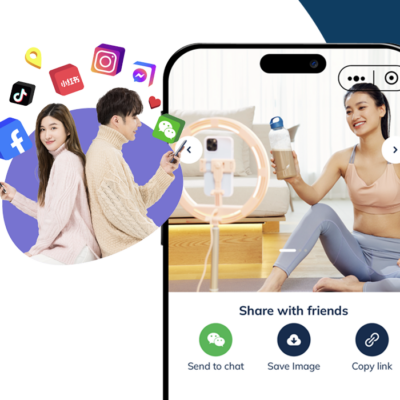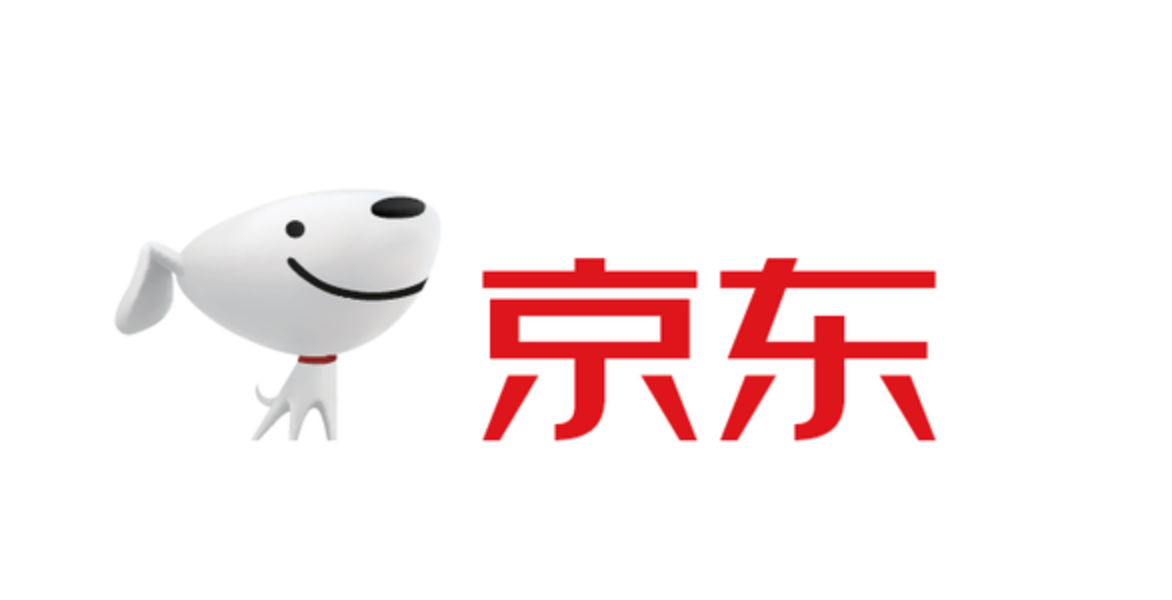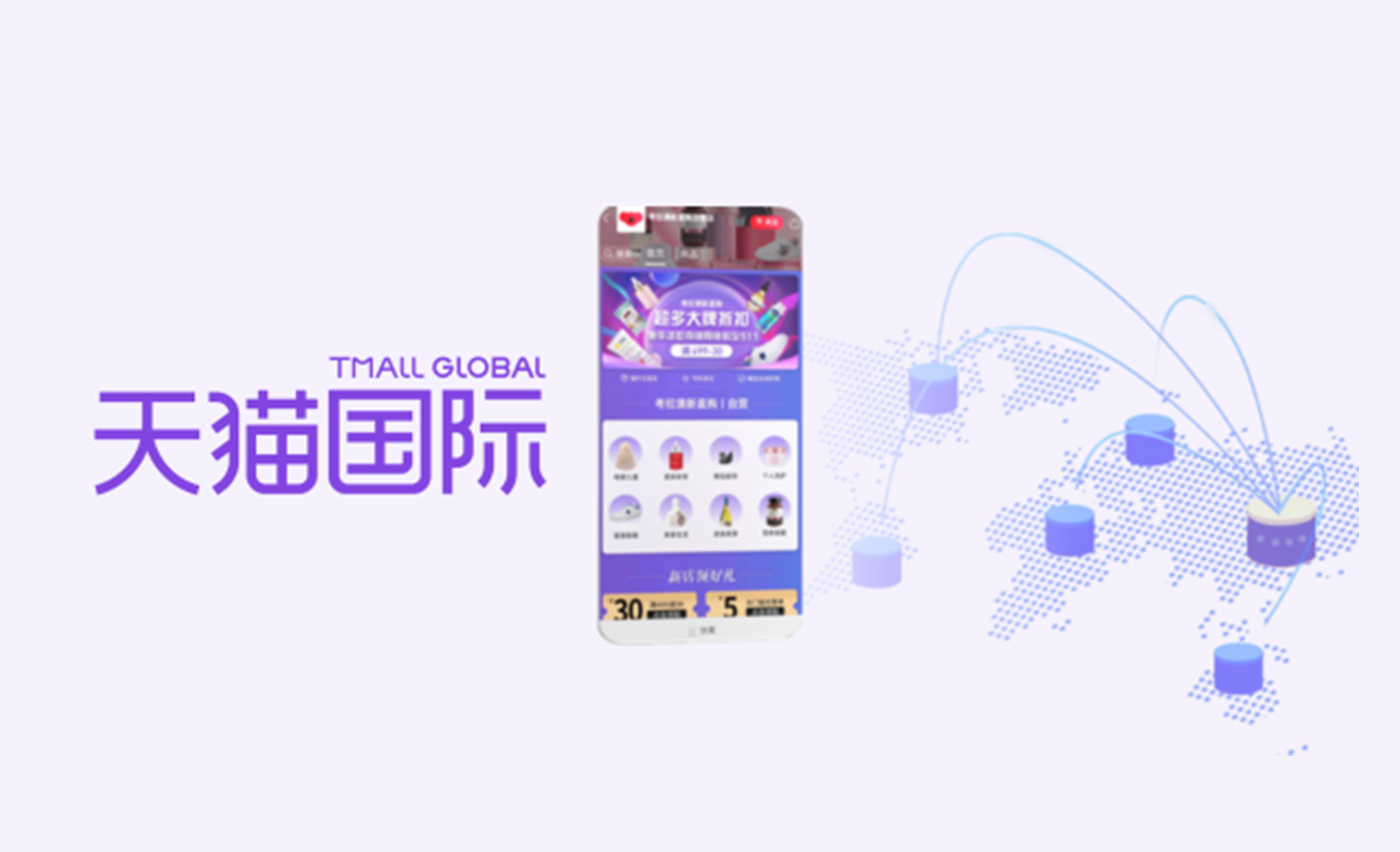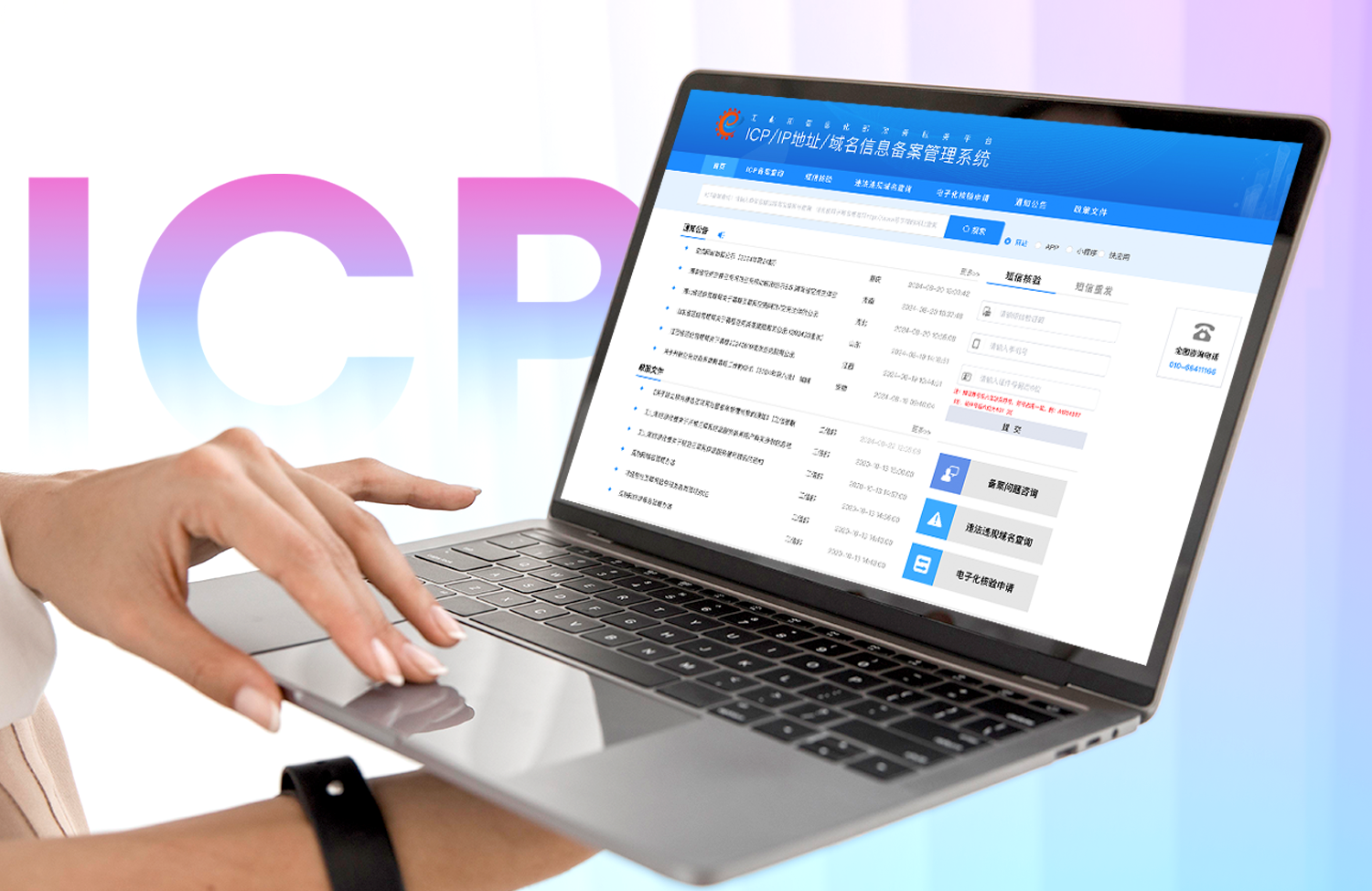ByteDance has entered the Mini-Program later than Baidu and Alipay (and certainly later than applet pioneer WeChat, who kicked off the craze). However, by launching Mini-Programs on its two hugely popular apps, Douyin (TikTok outside of China) and news and article platform Toutiao, ByteDance is standing as a real contender in the Mini-Program sphere. These apps are rich with potential for Mini-Program development and not only boast large, active user-bases but also present numerous opportunities for Mini-Programs to thrive due to how each app works. It comes as no surprise, then, that ByteDance's Mini-Programs have attracted a lot of attention in the short time since their release.
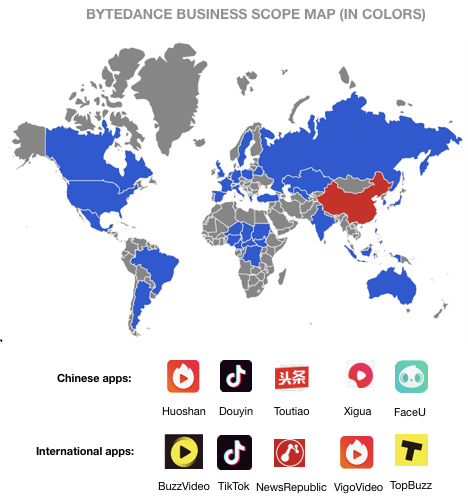
What Are the Advantages of ByteDance Mini-Programs?
The advantages of ByteDance's Mini-Programs over their rivals at WeChat, Alipay, and Baidu are:
- WeChat prioritizes user experience and has a considerable advantage in terms of how much traffic it sees on the platform. However, WeChat is so far hesitant to develop too fast, especially in the direction of commercialization. Meanwhile, ByteDance's Mini-Program efforts are aimed squarely at making the most of the commercial advantages of the technology.
- Baidu focuses on its integration with Baidu Search functionality. However, despite launching earlier, Baidu's Mini-Program offerings still lack a solid base of quality content. It's in this area that ByteDance wins out against Baidu.
- Alipay is squarely concentrating on business and life services for now, and does not have the social or eCommerce advantages that ByteDance has.
Additionally, ByteDance's Mini-Programs share coding systems between both Douyin/TikTok and Toutiao, which makes it easy for companies to develop a single Mini-Program and launch it on both platforms with no further development required - cutting down on both development and maintenance costs.
How Can Users Enter ByteDance Mini-Programs?
Douyin/TikTok
As of January 2019, Douyin/TikTok was seeing 250 million unique users each day, and as many as 500 million each month. Already, successful Mini-Programs on the platform have been launched by Xiaomi, Cat's Eyes Movies, and Jingdong.
At the moment, Douyin supports five main ways of accessing Mini-Programs. By far the most popular and important of these is the video link, which drives the most traffic to Mini-Programs each month. This is no surprise, since video playback is the primary appeal and purpose of the app. As recently as this May, the app also added support for product searching, enabling users to search for products and then directly open the relevant Mini-Program to purchase the item in question.
- Video link:
Mini-Programs can be accessed by clicking the link in the bottom left while a video is open.
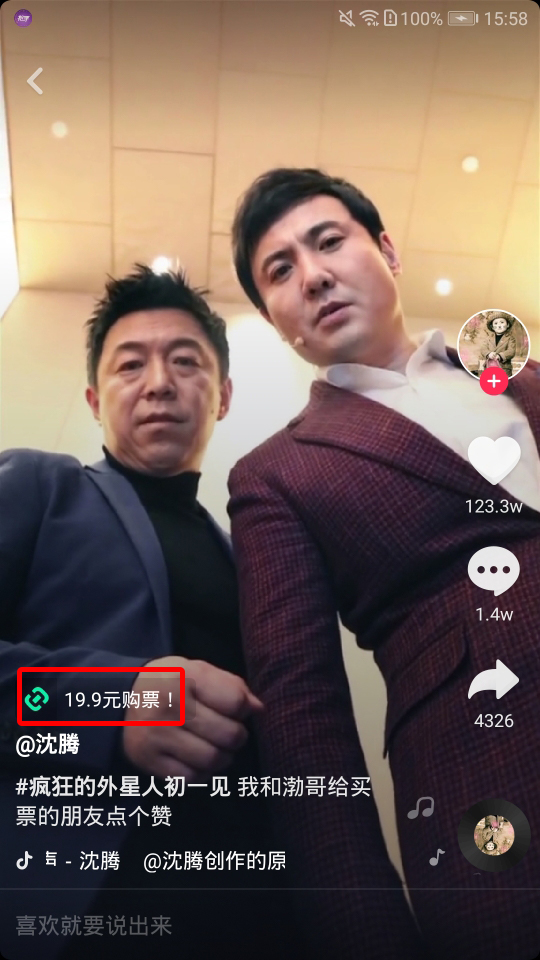
- Video comments area:
A link at the top of the comments area can lead to a Mini-Program.
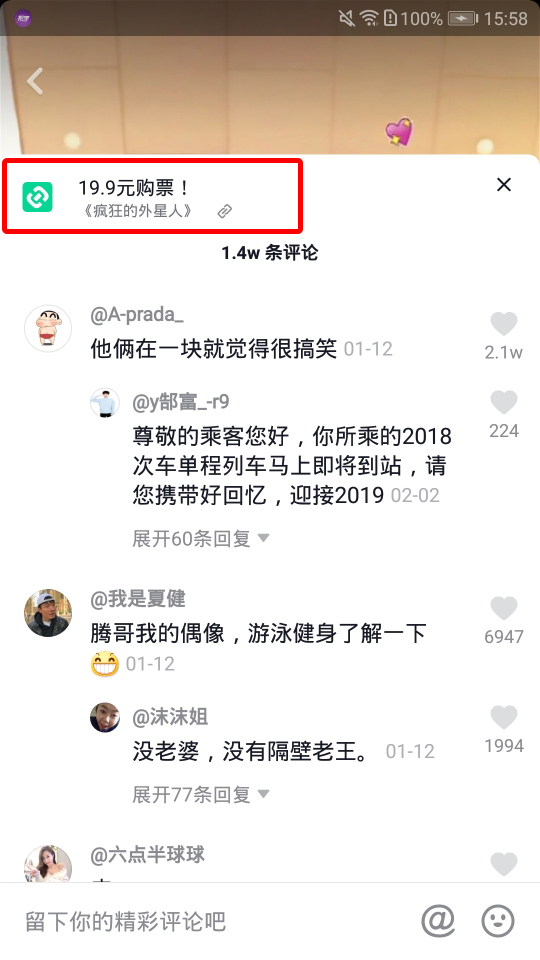
- Search function:
Mini-Programs can be opened after being searched for directly.
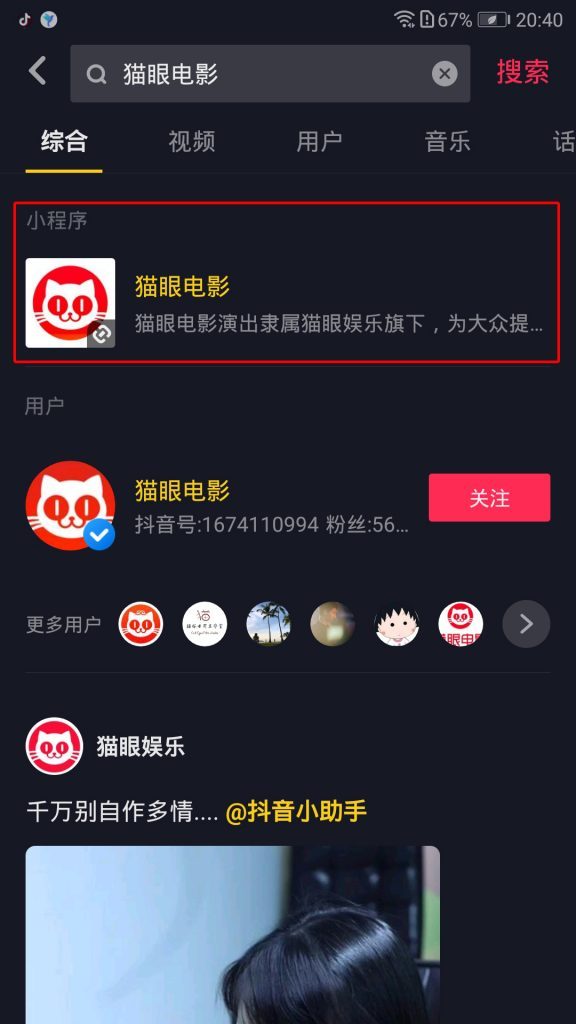
- Account Settings:
A column for Mini-Programs exists on each user's Account Settings page, listing those that the user has already used or saved for quick re-accessibility
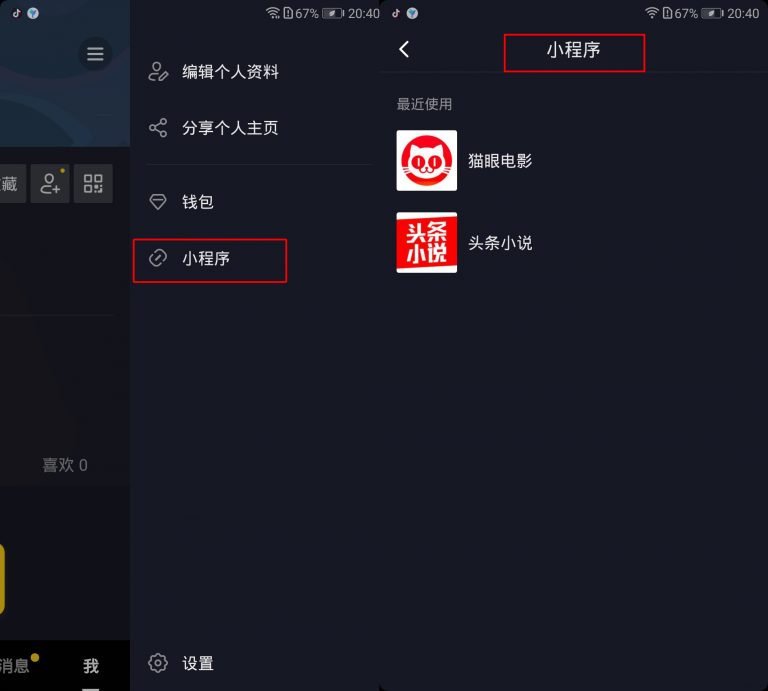
- Product search:
Users can search for items they wish to buy using the product search function and then will be taken into the relevant Mini-Program to buy said product when they click on it in the search results.
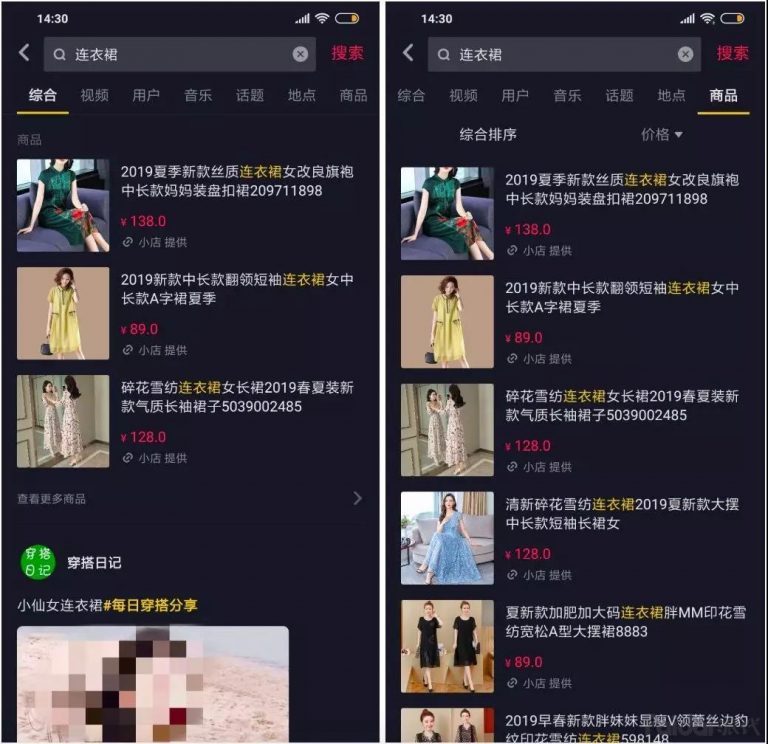
Toutiao
In 2018, Toutiao passed the 240 million user mark. At the moment, Mini-Programs can be accessed in seven major ways. In addition to leveraging image and video content to lead users into Mini-Programs, Toutiao can also make use of its central pillar as an article aggregator by inserting ads (text and streamed video) in between articles as users scroll down from article to article. One-click selling has found particular success with this latter model.
Toutiao and Douyin share a central template. But while Douyin is very in-your-face and showy, Toutiao offers a more 'introverted' user experience. Therefore, it is still exploring the perhaps less-obvious ways to getting users to engage with Mini-Programs in the app. By June this year, Xiaomi, CTrip, Cat's Eye Movies, Taobao Ticket Office, and other eCommerce Mini-Programs had already launched on Toutiao.
- Search function:
Mini-Programs can be opened after being searched for directly.
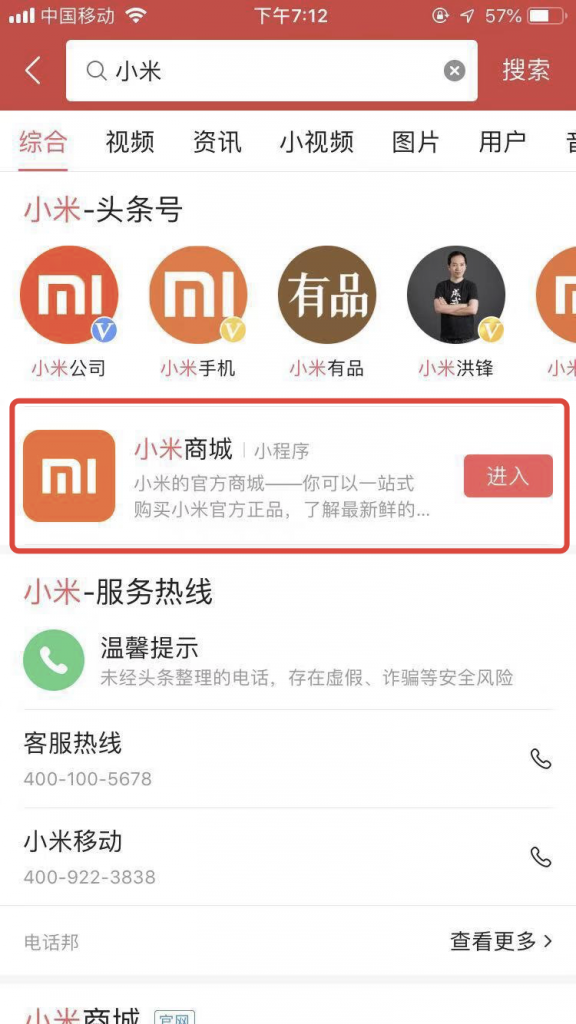
- Account Settings:
A column for Mini-Programs exists on each user's Account Settings page, listing those that the user has already used or saved for quick re-accessibility
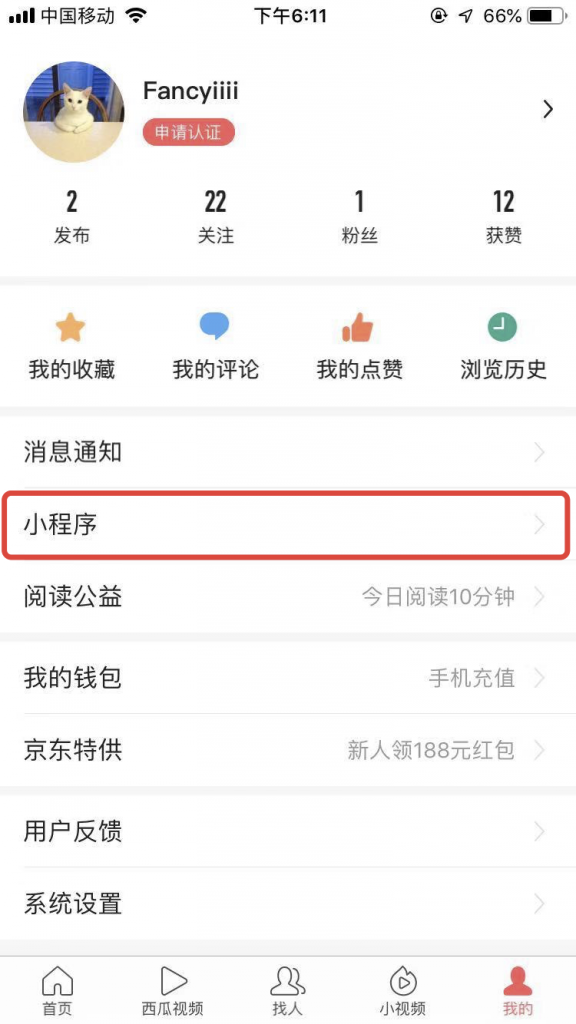
- Recently Used:
The most recently used Mini-Programs appear in a Recently Used section under the search bar in the app, where these can be directly re-accessed.
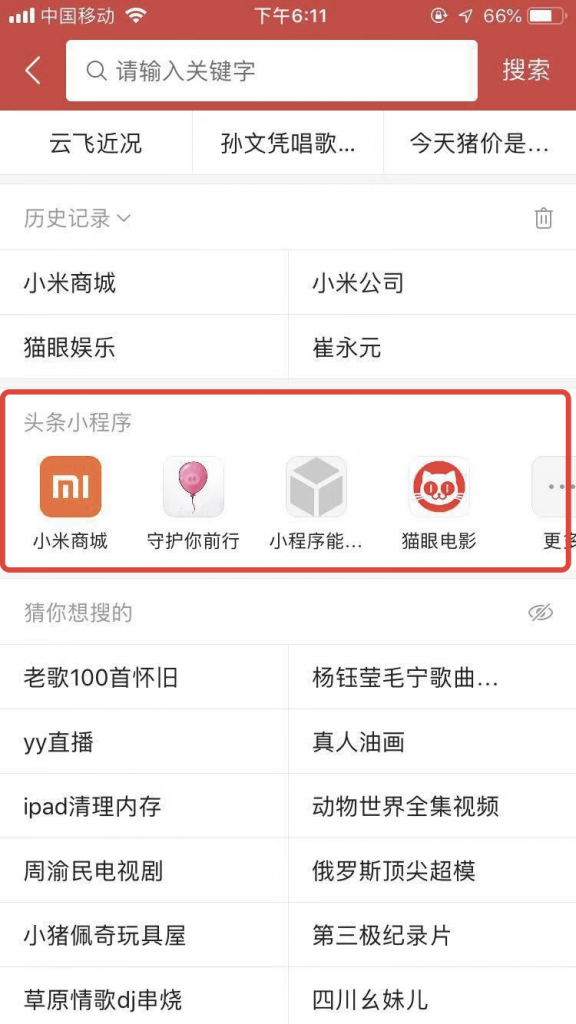
- Micro-Toutiao
The more quick and accessible part of Toutiao (not unlike a Facebook wall, or Twitter feed), Micro-Toutiao allows for Mini-Program links to be shared on the 'wall'/feed for quick access.
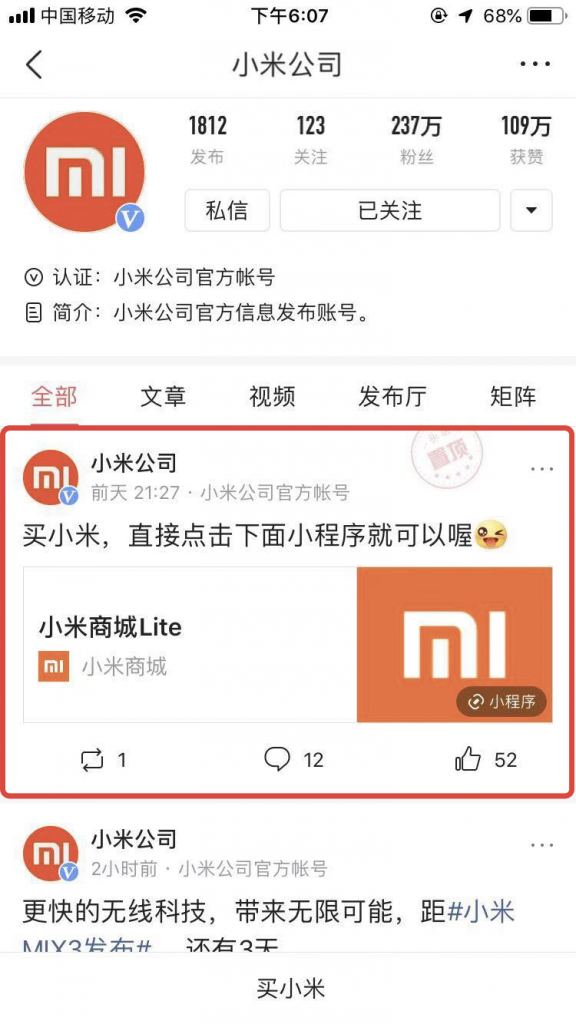
- Official Brand page
You can embed Mini-Program links into your brand's official page on Toutiao to quickly link interested users to the brand's Mini-Program.
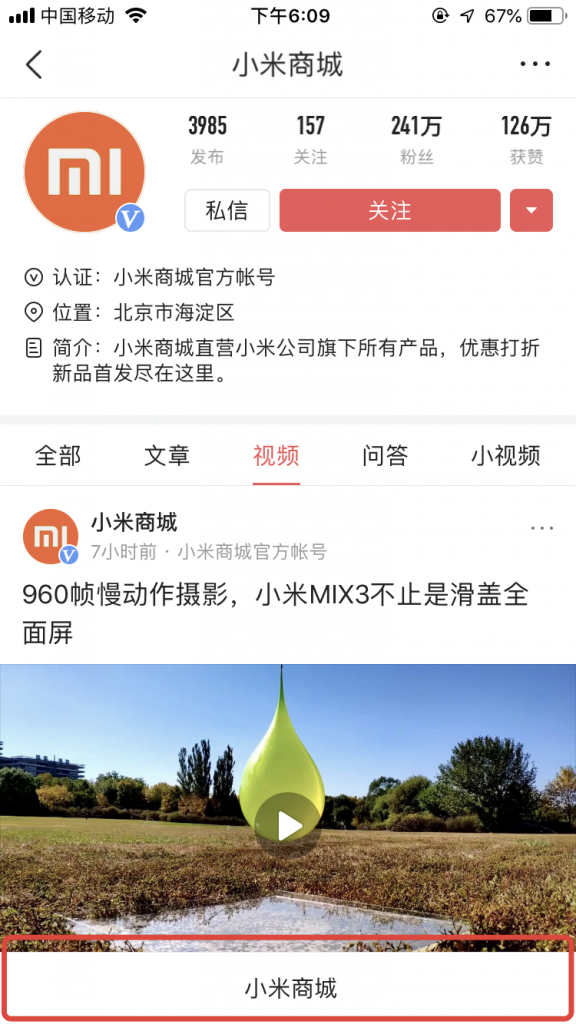
- Article and video links
You can directly embed links into an article or as a button during video playback for instant access.
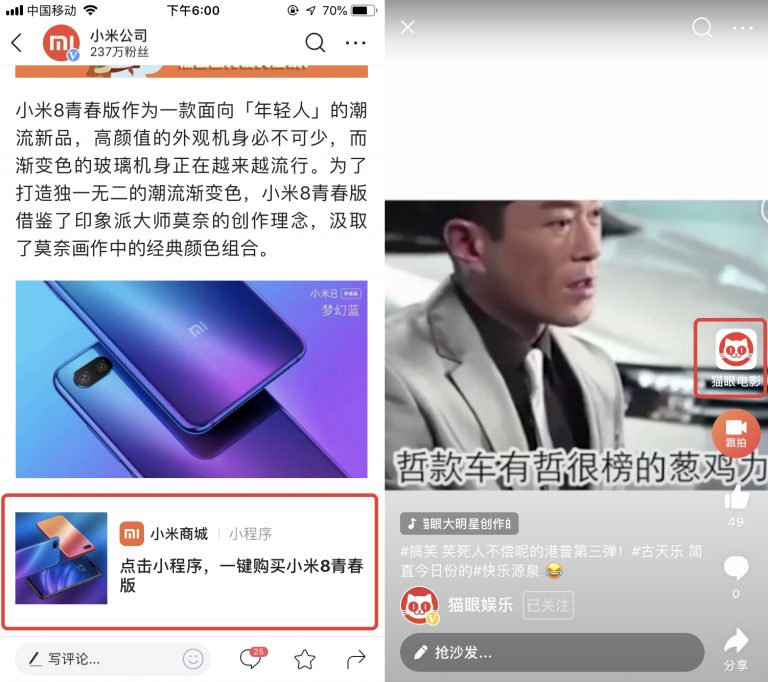
- Others:
Other access points include the ad feed, channel widgets, and from within the app's integrated eWallet.
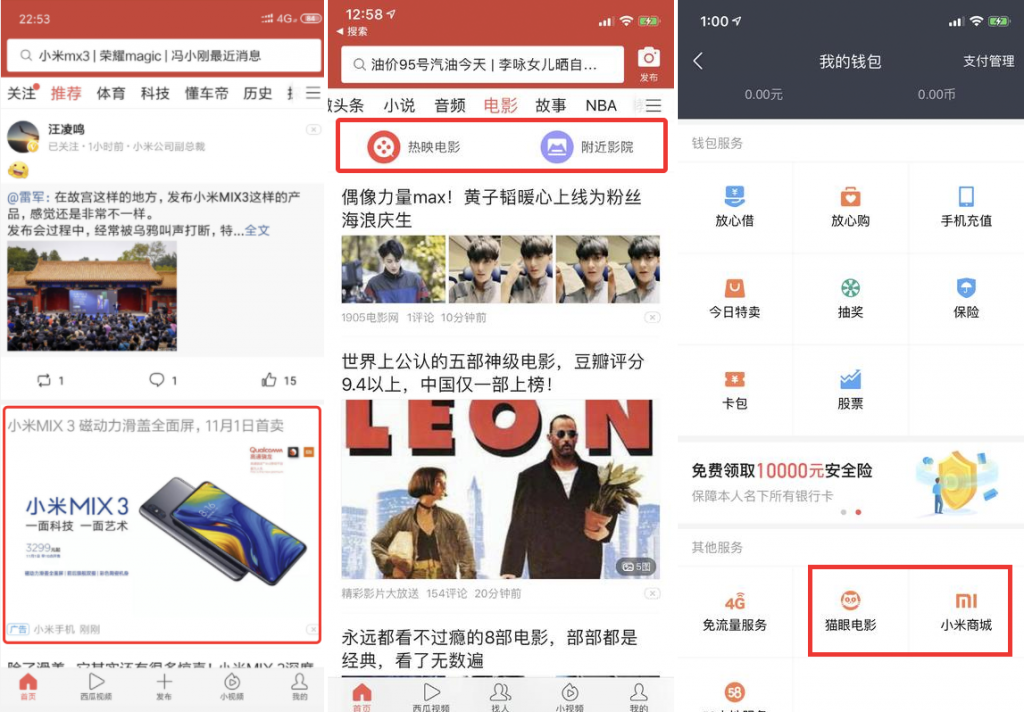
How Does the User Experience on ByteDance Mini-Programs Compare to WeChat Mini-Programs?
Here we're going to take the Xiaomi Mini-Program as a point of comparison between ByteDance Mini-Programs and WeChat Mini-Programs, since Xiaomi is an example of a popular and successful eCommerce Mini-Program that operates on both platforms.
It's immediately obvious that there are only small differences visually between the two Xiaomi interfaces, and ByteDance doesn't lose to WeChat in terms of smooth user experience. The biggest difference really is payment on the two platforms - the WeChat version only supports WeChat Pay, while the ByteDance version only supports Alipay.
How to Get Your Mini-Program Off to a Good Start on ByteDance Apps
Because user demands in the Mini-Program space are ever-changing, companies have to be agile to stay on top them. Therefore, how to successfully go from a 'cold start' to effective brand promotion is a question every new Mini-Program developer has to ask themselves.
Focus on Content
Whether it's Toutiao or Douyin, the user-base is already there, ripe for the picking. But these users expect the quality of your Mini-Program to be at least as high as the main app itself. Therefore, you need to bring your A-Game when it comes to optimizing user experience and creating quality content - something the ByteDance website also emphasizes.
Make the Most of Both Kinds of Traffic
Mini-Programs need to be drawing both organic and paid traffic to themselves in order to capitalize on the app's existing user base. You can do this through carefully planned and created content. Firstly the quality should meet user expectations, but also it should be relevant to a real market need. Especially a need that other brands aren't currently satisfying!
Case Study: Xiaomi
Here we look at how Xiaomi's success on Douyin and Toutiao. The company managed to turn its cold start into a big success in a matter of months.
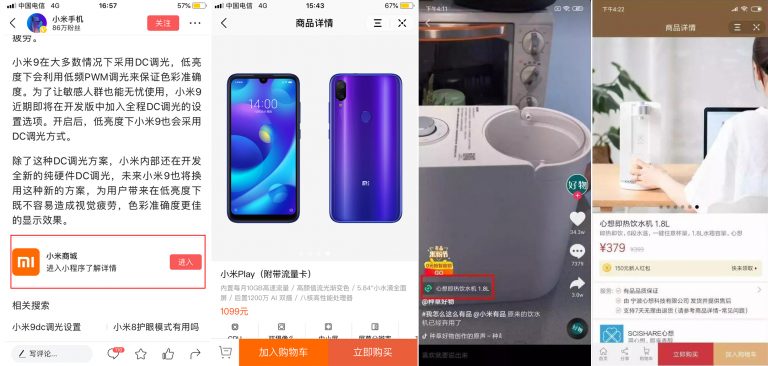
On Toutiao, Xiaomi embedded its Mini-Program into its brand communications, within an article published on the company's official account. This would take users directly to a page where they were able to buy the relevant item immediately. Avoiding any further redirection or app-switching made for a smoother user experience.
On Douyin, Xiaomi made use of their popular video content. They embedded links into videos that directed people to a product store page directly.
Xiaomi also leveraged the social media element by encouraging users to share these videos and buy links with their friends. This helped them recruit a grass-roots army of fans to become part of the marketing process themselves. This of course means that the videos must be entertaining or interesting beyond just being an advert for a product. Otherwise fans won't want to share them further.
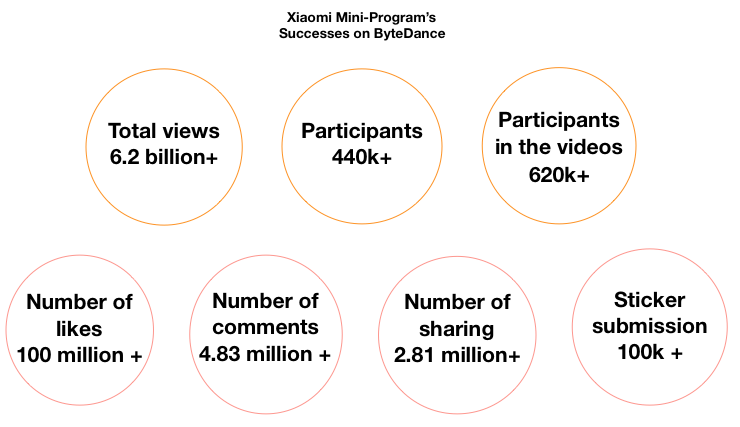
How Do Setup and Development Work for ByteDance Mini-Programs?
Launching a ByteDance Mini-Program involves the following steps:
- Registration: Individuals or companies can apply for certification on the platform
- Design: Come up with a Mini-Program that meets your specifications. Then upload all relevant information according to what kind of Mini-Program it is.
- Development: Refer to the developer documentation to develop the Mini-Program you designed above.
- Audit and release: Submit the most up-to-date version of your Mini-Program. After an audit, the Mini-Program will then launch.
- Promotion and distribution: Promote your Mini-Program's high-quality content using both free and paid advertising channels on Toutiao and Douyin.
TMO Group provides both development and maintenance services for ByteDance Mini-Programs on Toutiao and Douyin/TikTok. Additionally, we provide support for converting your existing WeChat Mini-Programs to ByteDance platforms. For more information, please contact our China mobile development experts.
